Asbestos Cover-Up
Written by Michelle Whitmer | Edited By Walter Pacheco | Scientifically Reviewed By Sean Fitzgerald, PG
As early as the late 19th century, scattered reports on the health risks of asbestos emerged in Canada, Europe and the U.S. By the 1920s, leading medical journals had published articles linking asbestos to asbestosis, a new and sometimes fatal lung condition where inhaled asbestos scars the lungs and makes breathing difficult.
The disease was a serious problem for asbestos workers, who often toiled in thick clouds of asbestos dust each day. Even in the 1920s, doctors believed asbestosis could be prevented by limiting exposure to asbestos. It would take several decades, however, before asbestos was properly regulated in the U.S. and workers learned their jobs could lead to cancer and other serious health complications years down the line.
Favoring Profits over Health of Workers
Scientists established a connection between asbestos and lung cancer in the 1930s. Around the same time, doctors were advancing their understanding of mesothelioma, an aggressive cancer of the lining of the lungs caused almost exclusively by asbestos.
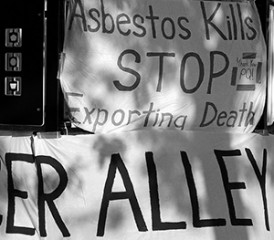
While evidence about the harmful effects of asbestos continued to grow, so did the influence of the asbestos companies. Between 1940 and 1980, the business expanded into a multibillion dollar industry that employed more than 200,000 people.
The success of these companies hinged on keeping the health risks of asbestos a secret — but it was asbestos workers and consumers who paid the price. In order to keep the industry alive and prosperous, many companies took steps to ensure miners, factory workers and the public knew nothing about the true dangers of asbestos.
Mr. Brown, do you mean to tell me you would let them work until they dropped dead?” He said, “Yes. We save a lot of money that way.Charles RoemerJohns Manville employee recalling what company president Lewis Brown said in a deposition
Company Knowledge of Asbestos Risks
Court evidence has revealed multiple companies that contributed to the asbestos cover-up. Some concealed medical research that may have promoted stricter asbestos regulations and safer work practices. Others worked their employees to an early grave, refusing to show sick workers their X-ray scans that showed signs of respiratory disease. Some of the most incriminating examples follow, but during the asbestos boom years, many companies played a part.
-
1858
-
1924

-
1929
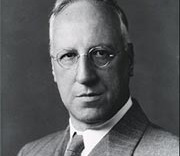
-
1931

-
1932

-
1932

-
1933

-
1935
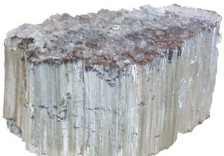
-
1935
 Raybestos-Manhattan president Sumner Simpson wrote, “The less said about asbestos, the better off we are,” in a letter to a Johns Manville attorney.
Raybestos-Manhattan president Sumner Simpson wrote, “The less said about asbestos, the better off we are,” in a letter to a Johns Manville attorney.
-
1940
 Johns Manville became a world leader in asbestos product sales.
Johns Manville became a world leader in asbestos product sales.
-
1945

-
1949
 Dr. Kenneth Smith, future medical director of Johns Manville, advised the company against telling its sick workers they have asbestosis.
Dr. Kenneth Smith, future medical director of Johns Manville, advised the company against telling its sick workers they have asbestosis.
-
1962
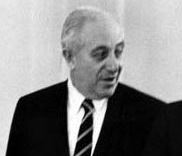
-
1964

-
1966

-
1971
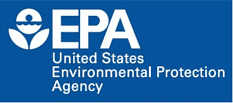
-
1971

Johns Manville
By most accounts, Johns Manville was the largest manufacturer of asbestos products and the leading asbestos supplier in the U.S. from the 1920s to the 1970s. Much of the company’s financial success over this period is attributed to Lewis H. Brown, an innovative businessman named president of the company in 1929.
Brown’s leadership helped elevate Johns Manville to No. 1 in worldwide asbestos product sales by the 1940s. It later came to light that he reached this milestone by placing company profits over the health of his workers, evidenced by countless internal memos, industry letters and courtroom depositions.
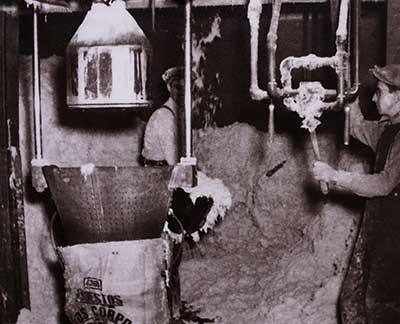
In a 1984 deposition describing a meeting between Brown, Johns Manville attorney Vandiver Brown and officials from the asbestos firm Unarco, Charles Roemer recalled Lewis Brown’s callous disregard for his employees’ health.
“I’ll never forget,” Roemer said. “I turned to Mr. Brown, one of the Browns made this crack (that Unarco managers were a bunch of fools for notifying employees who had asbestosis), and I said, ‘Mr. Brown, do you mean to tell me you would let them work until they dropped dead?’ He said, ‘Yes. We save a lot of money that way.’”
Decades earlier in 1949, Dr. Kenneth Smith, a local physician, sent a memo to Johns Manville headquarters concerning seven asbestos mill workers whose chest X-rays showed early signs of asbestosis. Smith advised company executives against sharing the test results with the workers, writing, “As long as the man is not disabled, it is felt that he should not be told of his condition so that he can live and work in peace, and the company can benefit by his many years of experience.”
We now know that Brown took Smith’s advice and made it company policy, leaving sick workers completely uninformed as their health degraded. Brown later hired Smith as medical director of Johns Manville, confirming he shared the doctor’s cruel approach to occupational health.
Metropolitan Life Insurance Company
While Metropolitan Life Insurance Company was not an asbestos business, it worked closely with asbestos companies to conceal the health effects of the toxic mineral. In 1944, the company insured more than a dozen big names in the industry, including Johns Manville, Raybestos-Manhattan, National Gypsum, Fibreboard and Flintkote.
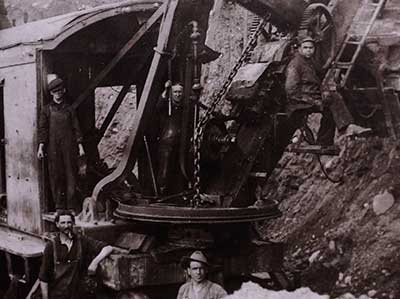
Metropolitan Life knew about the high asbestosis rates at Johns Manville’s factory in Manville, New Jersey, as early as 1932, but succeeded in blocking an inspection for poor work conditions there in 1945. The company even convinced government officials that asbestos hazards were under control, despite having knowledge of confidential company-sponsored reports that found evidence of asbestosis in 20% of workers.
In 1933, a plant physician at a Johns Manville plant in Illinois asked Dr. Anthony Lanza, a full-time employee at Metropolitan Life from 1926 to 1948, about hanging warning posters to spread worker awareness of asbestos-related health risks. Lanza objected because of the potential “legal situation.”
Lanza’s early 1930s study on asbestos workers in the textile industry revealed that half of all workers with five to 10 years of exposure showed signs of asbestosis in X-rays. Of those with more than 15 years of exposure, a remarkable 87% suffered from lung disease. The asbestos industry blocked the publication of these findings for four years, and likely altered the data before the report was released.
Raybestos-Manhattan Inc.
Raybestos-Manhattan has been a leading manufacturer of asbestos-containing textiles, brake linings and other friction products since the 1920s, and continues to do business outside the asbestos industry today. Court documents have revealed the company played a crucial role in the asbestos cover-up, most notably by working with Johns Manville in the 1930s to conceal information about the dangers of asbestos.
The Sumner Simpson Papers revealed private conversations that very arguably show a pattern of denial and disease and attempts at suppression of information … It further reflects a conscious effort by the industry in the 1930s to downplay, or arguably suppress, the dissemination of information to employees and the public for the fear of promotion of lawsuits.Judge James PriceSouth Carolina Circuit Judge
A collection of documents known as the Sumner Simpson Papers, named after the president of Raybestos-Manhattan in the 1930s and 1940s, provide clear evidence that the company attempted to hide asbestos health risks from workers and the general public.
Raybestos-Manhattan and Johns Manville in 1932 convinced Lanza of Metropolitan Life to alter his study on asbestos textile workers to minimize the seriousness of asbestosis. Manville and Raybestos allegedly had Lanza remove a sentence from the report explaining, “It is possible for uncomplicated asbestosis to result fatally.”
In a 1935 letter, A.F. Rossiter of Asbestos Magazine implied Simpson had requested he block the publication of articles mentioning asbestos dust hazards. Soon after, Simpson sent a letter to Johns Manville attorney Vandiver Brown. “The less said about asbestos,” he wrote, “the better off we are.”
Bendix Corporation
Bendix Corporation, now known as Honeywell, began manufacturing asbestos friction materials for automobiles in 1939 out of Troy, New York. The company expanded its operations to Cleveland, Tennessee, in 1964 and was still producing asbestos-containing brake components in the U.S. as recently as 1997.
Ernie Martin, director of purchases for Bendix Corporation, in September 1966 shared an asbestos report with Noel Hendry, a sales manager at a Johns Manville asbestos mine in Quebec, Canada. The report predicted asbestos health risks may lead to undesirable government regulations.
In response, Hendry said, “I suppose we have to bear with people who have nothing better to do than create alarm, but we are not alarmed, and we live and sleep with the stuff.”
While current U.S. regulations limit workplace asbestos exposure to 0.2 fibers per cubic centimeter of air (f/cc), surveys at Johns Manville’s Canadian mine and various other mines and mills throughout Quebec in the 1950s revealed asbestos levels ranging from 23 to 720 f/cc. Clearly, there was cause for alarm.
As more evidence of the dangers of asbestos emerged, Johns Manville’s Asbestos Fiber Division sent a position paper titled “Asbestos and Human Health” to a Bendix manager. The paper stated the asbestos industry had invested millions in industrial hygiene and medical research, but it gave a misleading account of the health risks of asbestos. It featured section titles labeled “An Essential Product” and “No Risk Shown for General Public.”
Turner & Newall Ltd.
In 1920, four U.K. asbestos businesses merged to form Turner & Newall, one of the first companies to industrialize asbestos. Like many of the major asbestos companies in the U.S., Turner & Newall made repeated efforts to hide asbestos health risks.
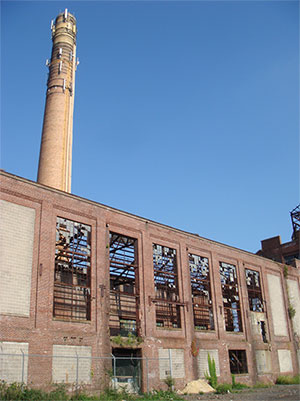
While the company held many health and safety conferences, officials did not open the conversations to those unfamiliar with asbestosis, namely workers and their trade unions. Employees at Turner & Newall plants began dying of asbestos exposure in the 1920s, including a young asbestos worker who suffered a massive accumulation of fibers in her lungs. In her autopsy report, a doctor said the collection of fibers was so thick his knife almost appeared to grate as he cut into her left lung.
When the British government announced plans to enact the first regulations on the asbestos industry, Turner & Newall ensured industrial hygiene measures would only apply to manufacturing plants and not the end-use of asbestos products. Laws requiring regular medical examinations for asbestos workers came next, but Turner & Newall convinced the government to exclude asbestos insulation workers from mandatory testing. Besides miners, this group was perhaps the highest risk occupation for asbestos disease.
Once government doctors learned in 1932 that warehouse employees who packed and shipped asbestos products faced serious asbestosis risks, Turner & Newall and several other companies convinced government representatives that regulatory updates to protect these workers weren’t necessary.
Pathologist on the Payroll
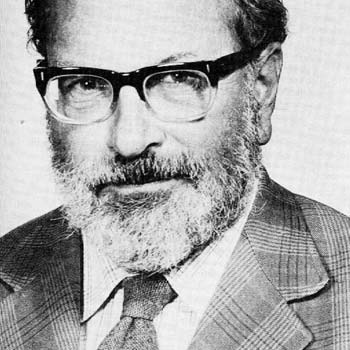
A 1960 groundbreaking report on the risks of asbestos by pathologist J.C. Wagner led to significant upgrades in safety standards in the U.K., the decline of the asbestos industry in North America — as well as threats to his life.
But 30 years after Wagner published his initial findings, he reversed his position.
Court records later revealed the man whose scientific research had once rattled the asbestos industry was on the payroll of several asbestos manufacturers and other companies that used the deadly mineral to produce their products.
The New Cover-Up: Asbestos-Contaminated Talcum Powder
Evidence presented in recent lawsuits filed against manufacturers of talcum powder products revealed they tried to cover up asbestos contamination in baby powder and other products.
Asbestos and talc are two minerals that naturally form alongside each other under similar conditions. While not every source of talc is contaminated with asbestos, many talc deposits contain asbestos, and that is how talcum powder products end up with asbestos in them.
Companies are supposed to use asbestos-free talc to make talcum powder products. Several companies, including Johnson & Johnson and Imerys Talc America, have claimed that their talc products are free of asbestos even after scientific testing proved otherwise.
Johnson & Johnson
A Reuters report published in December 2018 revealed that Johnson & Johnson had been covering up asbestos contamination in its talcum powder products, including Johnson’s Baby Powder, since the 1970s.
Johnson & Johnson’s internal documents and memos showed the company covered up tests that detected asbestos from at least 1971 through the early 2000s, and never reported the tests to the U.S. Food and Drug Administration. Johnson & Johnson is ending global sales of baby powder containing the mineral talc in 2023, according to a 2022 study published in The British Medical Journal.
Imerys Talc America
Imerys Talc America supplied the talc used in Johnson’s Baby Powder. In a 2017 mesothelioma lawsuit involving industrial talc supplied by Imerys, a California jury awarded $22.17 million to the widow of a painter after hearing evidence that Imerys reblended its talc in an attempt to dilute and hide asbestos contamination.
Military Knowledge of Asbestos Danger
All branches of the U.S. military used asbestos extensively from the 1930s to the mid-1970s, with the most hazardous conditions occurring in U.S. Navy ships and shipyards. As a result, veterans serving a wide range of military occupations are now at high-risk of developing cancer and other asbestos-related health complications.
We are not protecting the men as we should.C.S. StephensoU.S. Navy Commander of Preventive Medicine
The U.S. government certainly had knowledge of asbestos dangers prior to World War II, when the Navy built and deployed thousands of new ships loaded with asbestos insulation. Asbestos health risks are mentioned in Navy correspondence and documents from government archives dating back to the late 1930s.
While there’s no denying the military could have done more to protect our veterans, no evidence shows the government contributed to the asbestos cover-up.
In litigation, attorneys representing asbestos companies have argued that strict military specifications required the use of asbestos, but documents from the 1940s and 1950s suggest the industry may have played a leading role in drafting these specifications. Although some Navy guidelines were written for asbestos insulation, most major specifications for pipe and block insulations listed performance requirements, but not specific materials.
Insulation manuals in the early 1970s first told military insulation workers to take precautions while handling asbestos. The Navy adopted new asbestos regulations from the Occupational Safety and Health Administration (OSHA) in 1974, and issued a ban on all new asbestos insulation materials the following year. It is likely, however, that harmful exposures occurred well after 1975, when the Navy began to phase asbestos materials out of its ships.
Asbestos Dangers Confirmed
In the 1960s, new developments in law and medicine exposed the questionable dealings of the asbestos industry and put an end to a cover-up that may have continued indefinitely. Dr. Irving Selikoff of Mount Sinai Hospital in New York, with the help of two colleagues, definitively linked occupational asbestos exposure to cancer and other life-threatening conditions in 1962 and 1963. Finally, the asbestos industry could no longer hide or ignore the truth.
Beginning of Legal Action over Asbestos Exposure
Several years later, the American Law Foundation amended tort law to make the sellers of dangerous materials liable to legal action unless they placed adequate warning labels on their products. Not surprisingly, few companies added labels until the law required it. The first asbestos product lawsuit emerged in 1971, opening the door for the thousands of lawsuits that followed.
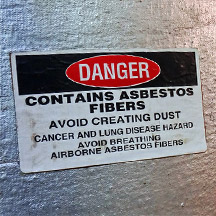
Mesothelioma Linked to Asbestos
Scientists established a connection between asbestos and lung cancer in the 1930s. Around the same time, doctors were advancing their understanding of mesothelioma, an aggressive cancer of the lining of the lungs caused almost exclusively by asbestos.
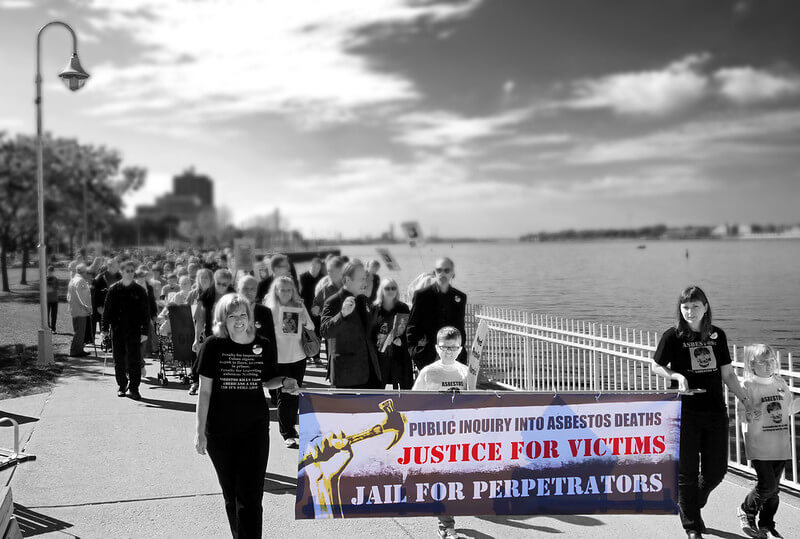
Legacy of Asbestos Continues
Although litigation brought massive payouts to asbestos workers — as well as punitive damages that drove more than 100 asbestos companies to bankruptcy by 2014 — families around the world still feel the effects of the asbestos industry’s conspiracy.
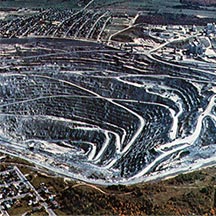
Global Asbestos Use
Knowledge about the dangers of asbestos prompted more than 55 countries to ban or restrict asbestos use, but worldwide use of the toxic mineral continues. In 2013 alone, the world produced and consumed more than 2 million metric tons of asbestos, with the majority of it mined and used in Russia and China.
- Russia: 618,037 metric tons
- Kazakhstan: 175,235 metric tons
- Brazil: 125,832 metric tons
- China: 52,860 metric tons
- India: 119 metric tons
In 2013, Russia led the world in asbestos exports by a massive margin. The nation shipped off 618,037 metric tons of the toxic mineral, more than the next four leading countries combined. While China and India exported significantly less asbestos than Russia, Kazakhstan and Brazil, in 2013 these countries were the two largest asbestos importers.
- India: 302,546 metric tons
- China: 202,866 metric tons
- Indonesia: 156,050 metric tons
- Thailand: 53,130 metric tons
- Ukraine: 35,234 metric tons
India led the world in asbestos imports in 2013, with China and Indonesia not far behind. Despite the availability of similar and far less dangerous substitutes for asbestos, these five nations welcomed a combined total of nearly 750,000 metric tons of the toxic substance into their borders in 2013 alone.
- Russia: 1,050,000 metric tons
- China: 420,000 metric tons
- Brazil: 307,000 metric tons
- Kazakhstan: 242,000 metric tons
- India: 240 metric tons
According to United Nations data, Russia, China, Brazil and Kazakhstan mined the bulk of the world’s asbestos supply in 2013. Rates of asbestos-related disease, including lung cancer and mesothelioma, are highest among in industries that handle asbestos directly. Most sources cite mining as the most dangerous of all asbestos-related occupations.
- China: 570,006 metric tons
- Russia: 432,365 metric tons
- India: 302,668 metric tons
- Brazil: 181,168 metric tons
- Indonesia: 156,050 metric tons
In 2013, the top consumers of asbestos were developing nations and newly industrialized countries in need of affordable building supplies, including China, Russia, India, Brazil and Indonesia. While 55 nations have banned asbestos completely, its use continues in the developing world, where knowledge of its health risks and safe work practices are far too scarce.
In 2010, more than 60 nations reported statistics on the number of mesothelioma deaths to the World Health Organization (WHO), but experts warn these figures may not be completely accurate. In 2005, one study estimated as many as 43,000 people worldwide die from this aggressive cancer each year. Despite signs of an increased incidence of mesothelioma in a wide range of countries, fewer than 15,000 deaths were reported to WHO in 2010. Many nations do not document mesothelioma deaths, and one commonly cited article on the global burden of mesothelioma estimates one case may be overlooked for every four to five recorded.
A total of 66 nations have banned asbestos as of March 2019. An additional 10 nations are placing restrictions on its use. Although all 28 countries of the European Union have banned the use of asbestos, the toxic mineral remains legal in the U.S.
When Will Asbestos Exposure End?
Despite a clear medical link between asbestos exposure and various cancers, workers worldwide still handle heaps of raw asbestos by hand without protective equipment or guidelines for safe work practices. In coming years, researchers expect the number of asbestos-related cancer cases in the U.S. to peak, but developing nations that rely on cheap asbestos building materials will suffer easily-preventable health problems and deaths for decades to come. Unfortunately, asbestos cover-ups continue in many countries.



